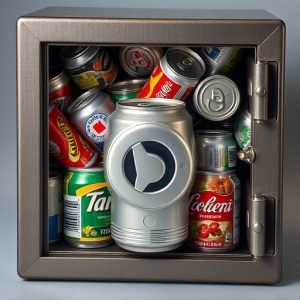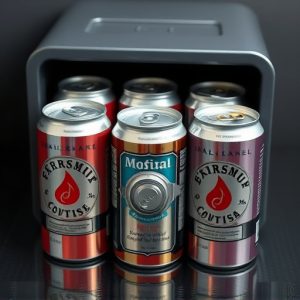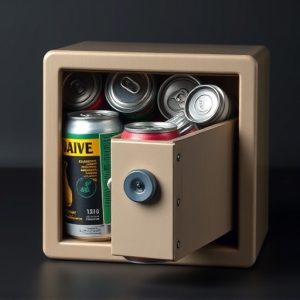Unveiling Hidden Dangers: Fake Cleaning Products with Secret Compartments
The consumer goods sector faces a challenge with fake cleaning products that not only have inferior…….
The consumer goods sector faces a challenge with fake cleaning products that not only have inferior quality but also pose hidden dangers, including potential illegal activity. Sophisticated designs and marketing tactics deceive buyers who might unknowingly purchase bottles with secret compartments designed to hide substances or personal items. These cunning tactics raise serious safety concerns, emphasizing the need for consumer vigilance. The innovative field of concealment design creates near-indistinguishable fake cleaning product replicas with hidden storage spaces, appealing to travelers and hobbyists but carrying risks of unauthorized access and security threats.
Uncover the hidden world of concealed compartments within everyday consumer products, particularly focusing on fake cleaning items that secretly harbor secret stowaways. This article delves into the intricate design and craftsmanship behind creating realistic compartments, exploring their diverse potential uses from secure storage to unforeseen dangers. By examining these innovative yet insidious solutions, we gain insights into the complex interplay between convenience, creativity, and safety in our modern world.
- Unveiling the Concealed: How Fake Cleaning Product Can Hide Secret Compartments
- Design and Craftsmanship: Creating Realistic Compartments Inside Everyday Items
- Potential Uses and Dangers: Navigating Safety and Security with Hidden Storage Solutions
Unveiling the Concealed: How Fake Cleaning Product Can Hide Secret Compartments
In the world of consumer goods, fake cleaning products have emerged as a significant concern, not just for their subpar quality but also for their potential hidden dangers. These fraudulent items often come with intricate designs and clever marketing strategies that can mislead buyers. What many consumers don’t realize is that these seemingly innocuous cleaning bottles might harbor secret compartments—a sneaky feature designed to conceal illegal substances or personal items.
Unsuspecting shoppers purchase these fake cleaning products, believing them to be genuine, only to discover later that the product contains a concealed space. This revelation highlights the sophistication of manufacturers who exploit consumer trust. By imitating brand logos and packaging, they create an almost indistinguishable replica, making it easier for both buyers and authorities to fall victim to their deceptions. The presence of secret compartments in fake cleaning products raises serious concerns about product safety and regulatory measures, prompting consumers to exercise caution and stay informed.
Design and Craftsmanship: Creating Realistic Compartments Inside Everyday Items
In the realm of innovative concealment, crafting realistic hidden compartments within everyday items has become an art form. One such intriguing application is the integration of secret storage spaces into seemingly innocuous consumer products, particularly focusing on fake cleaning product containers. Designers and artisans employ intricate craftsmanship to create these concealed compartments, ensuring they blend seamlessly with their surroundings.
By studying the anatomy of typical cleaning products, from bottle shapes to label designs, creators develop replicas that are nearly indistinguishable from genuine articles. This meticulous attention to detail allows for the subtle placement of secret compartments, perfect for stowing away valuable items or sensitive materials. The result is a practical and deceptive solution, where users can store their belongings discreetly within what appears to be an ordinary cleaning product.
Potential Uses and Dangers: Navigating Safety and Security with Hidden Storage Solutions
Hidden storage solutions, like concealed compartments within seemingly ordinary consumer products, offer intriguing potential uses for individuals seeking secure and discreet spaces. Imagine stowing away sensitive items, such as valuable documents or small electronics, inside a fake cleaning product container. This innovative approach could prove invaluable for travelers, hobbyists, or even professionals requiring on-the-go security.
However, alongside the benefits, there are distinct dangers to consider. The very nature of these hidden compartments raises concerns about unauthorized access and privacy breaches. Malicious actors could target such devices, leading to potential security risks and data exposure. Furthermore, unregulated use may encourage unethical behavior, such as concealing illegal substances or stolen goods within everyday products. Thus, while fake cleaning product secret compartments provide intriguing possibilities, careful navigation of safety and security measures is paramount to mitigate associated hazards.
The revelation of hidden compartments within seemingly mundane consumer products, particularly fake cleaning items, highlights a fascinating blend of design innovation and potential risks. While these secret stowaways can offer intriguing storage solutions, they also raise concerns about safety and security. As the demand for concealed spaces grows, understanding both the creative aspects and the dangers associated with such devices is essential to making informed decisions in today’s world.


